Choosing a color for the bedroom
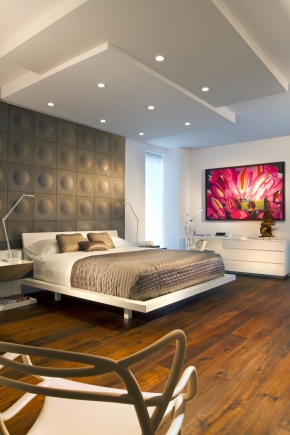
When choosing a color for a bedroom, it is important to consider that some shades can calm and relax the body, while others encourage vigorous activity. Therefore, it is important to know what colors - what function they perform. You can learn how to choose the right color for the bedroom from designers and even scientists from the Edinburgh Sleep Center.

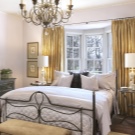
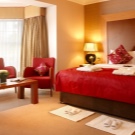
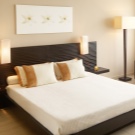
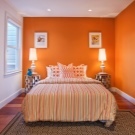

Which color is better to choose: tips from designers
Designers and scientists at the Edinburgh Sleep Center agree on the meaning of a particular color for sleep. But opinions on specific colors for painting walls vary.


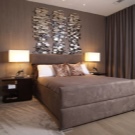
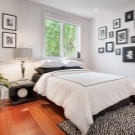
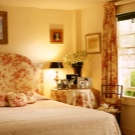
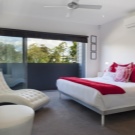
Blue and blue
In the first place, designers put blue for sleeping. And according to scientists, people with blue bedrooms sleep longer than people with bedrooms of other colors. According to scientists at the Edinburgh Sleep Center, specialized receptors in our eyes (the same cells that report the daily rhythms of our brain) are most sensitive to the shade of the wave.
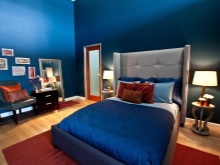


Yellow
Surprisingly, according to designers, the second color suitable for sleeping is yellow. A sunny hue stimulates the nervous system, promoting relaxation. Plus, the subtle yellow hue creates instant coziness in any bedroom.
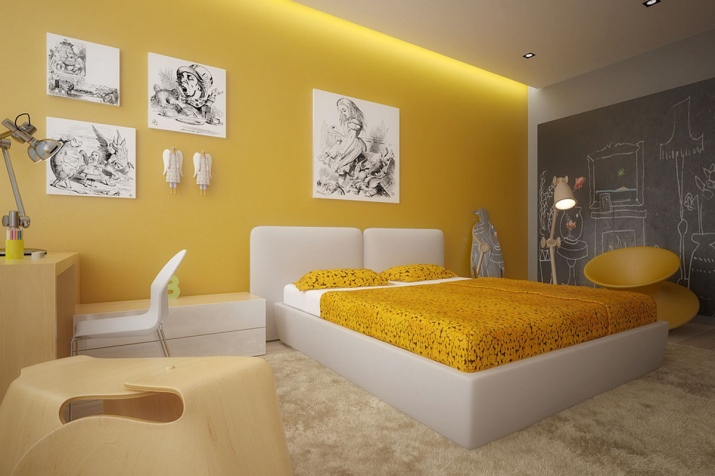
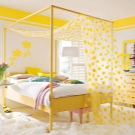
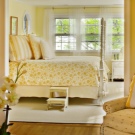
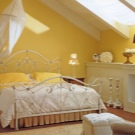
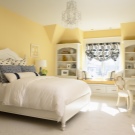
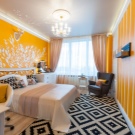
Green
Green is in third place in the design of bedrooms. According to scientists, people who sleep in a green bedroom wake up feeling optimistic and positive.
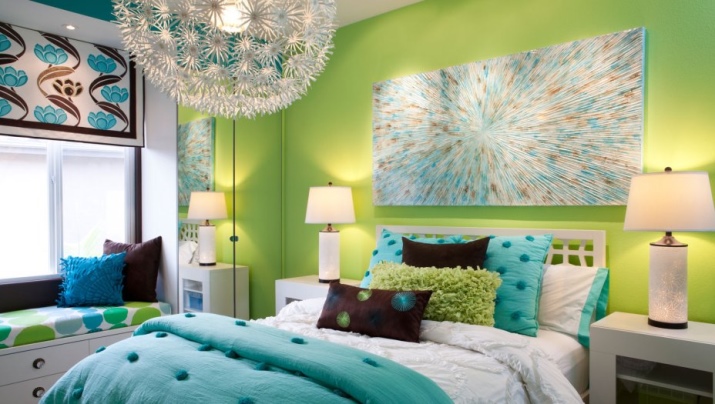

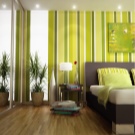

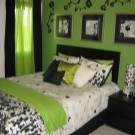
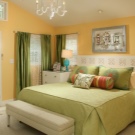
Silver
Oddly enough, many designers advise choosing silver bedrooms. But according to scientists, people with silver bedrooms can get an unexpected side effect. Most of those with silver bedrooms said they were more motivated to exercise in their bedroom in the morning.
-
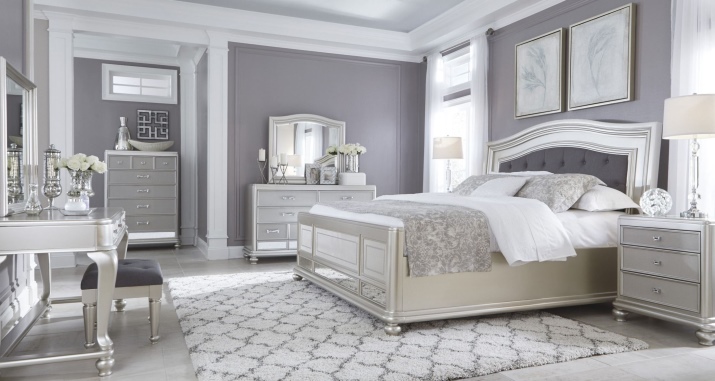

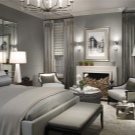
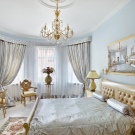
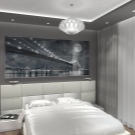
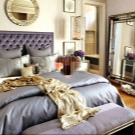
Purple
According to scientists, people with purple bedrooms are the least rested of all, getting an average of a paltry five hours and 56 minutes of sleep per night. The rich design in eggplant color stimulates mental activity, making it difficult to turn off the mind after a busy day and potentially trigger vivid dreams or nightmares. Therefore, designers advise mixing purple with white, creating a delicate shade of it (bedrooms in lilac, lavender or plum are appropriate here), only in this case the effect of the color will be minimal.
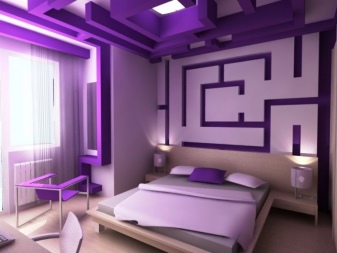
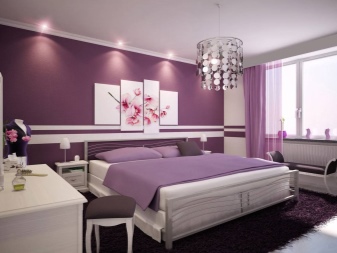


Brown
Coffee bedrooms are not as cozy as they might seem. Color can make the occupants of a room feel jittery, uncomfortable, and restless. Designers use the Milky Oak shade mainly in private homes. Due to the large number of windows and light, the room does not seem so gloomy and the very appearance of a private house contributes to decorating the room in the color of "coffee with milk".
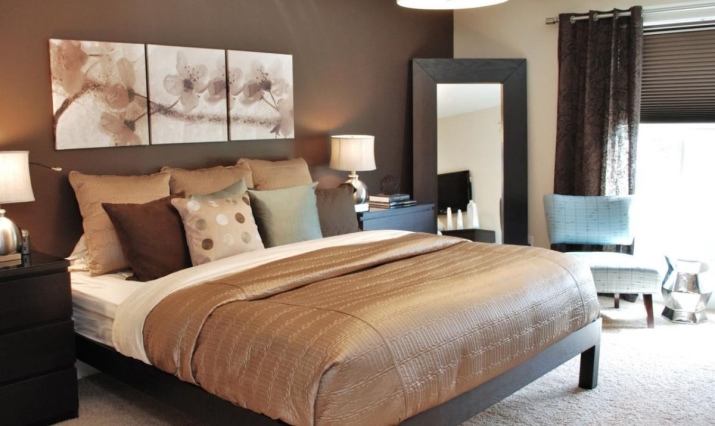
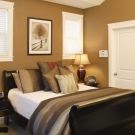
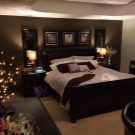
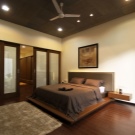
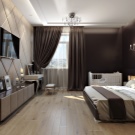
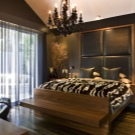
Black
Black is also not a good choice for a bedroom. It seems that the room will look gloomy enough, in fact it is not. She is more likely to be stylish - this is what the designers think. And a study by scientists showed that people slept much better in a graphite-colored bedroom with black linens.
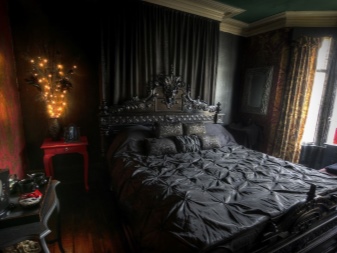
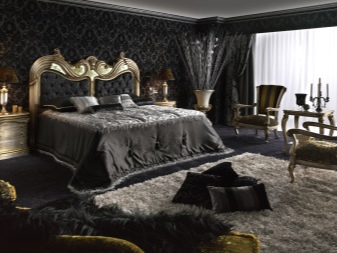
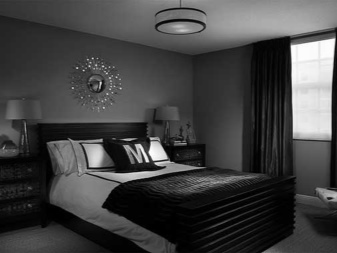
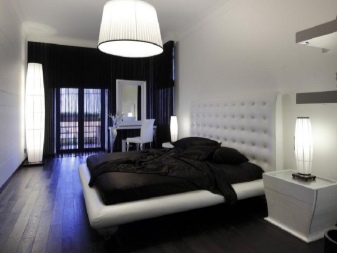
Beige and powdery
Designers love to offer this bedroom design to newlyweds. And for good reason.According to scientists, couples who sleep in peach, ivory, vanilla or gold décor make love on average three times a week - more than any other shade.
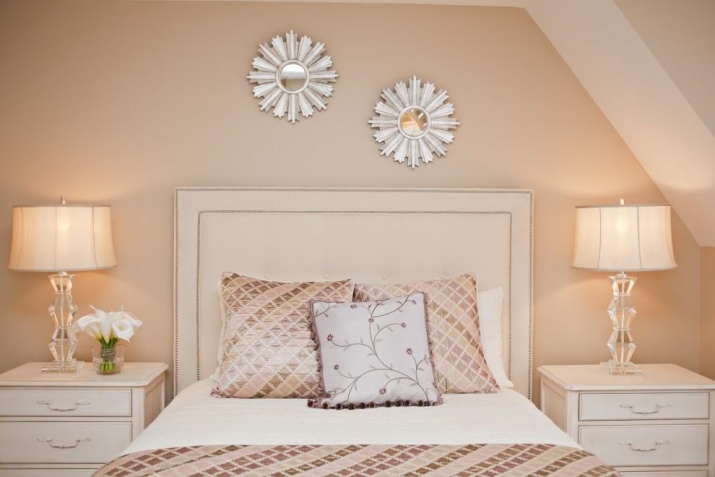
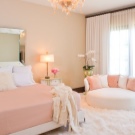

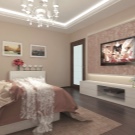

Red
Red bedrooms are the most unsuitable for lovers. Designers considered this color to be the fashion of the last century and try not to use it in their layouts. Even fuchsia or terracotta, which is fashionable today, are used less and less. The exception is lingonberry - pillows, lamps and other small elements of the interior are decorated with this shade.
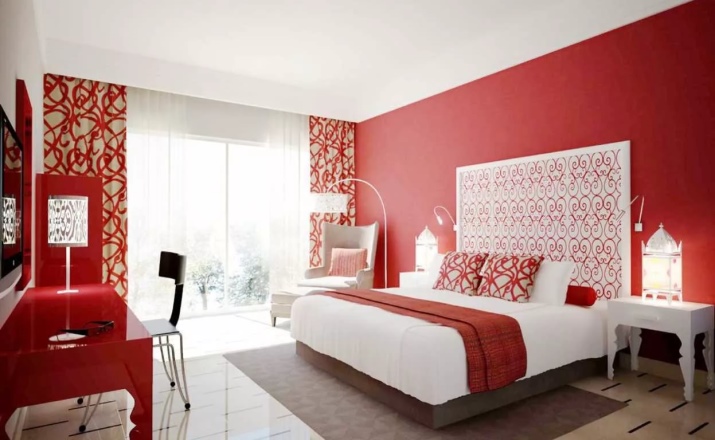
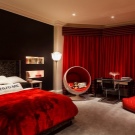
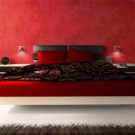


White
White is suitable for those who are used to relaxing in the bedroom. Because you don't want to work overtime in a bedroom like that. Designers rarely offer such a shade to clients - in their opinion, it is extremely impractical.
Stripes, stencils, spongy paint and textures can add style to any bedroom. For a truly unique design, you can paint your ceiling in the same shade as your walls. Some interior designers recommend using muted ceiling paint so that the accent is on the interior of the room, rather than on the ceiling.
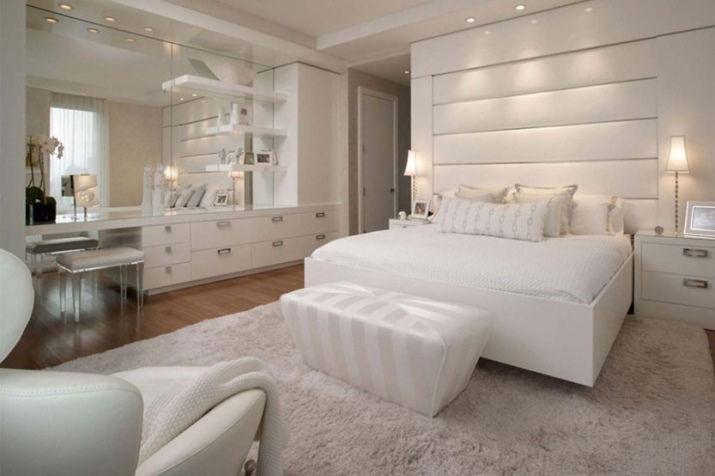

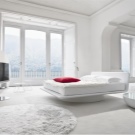
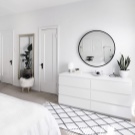
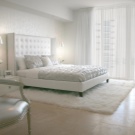
The right combination of tones in the room
If the bedroom has a bathroom and walk-in closet or living room, then it's best to plan the colors for all of those spaces as a whole. This does not mean that the colors in the bedroom and bathroom should match, but they should complement each other. This creates a unified look that transforms the bedroom into the ideal personal space that is so often lacking.
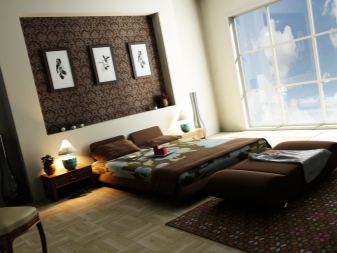
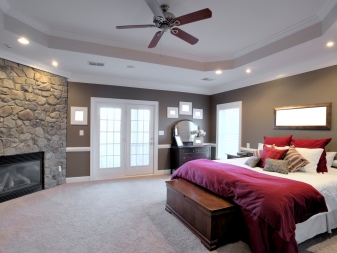
The combination of black and white gives energy and strength, and the simplicity of the combination creates a soothing element that may not be present with other combinations. This simple color scheme allows for the use of large templates.
Large black stencils or a repeating pattern on a white wall can provide a stunning effect. A black upholstered headboard with a white wall, white fur bedspread and decorative elements creates a look of decadent luxury. The black and white combination is generally considered the most appropriate in modern design. but that doesn't mean you can't try it in a more traditional style. Wrought iron or wood furniture painted black and paired with soft white linens and a faux fur blanket brings elegance and romance to the bedroom, while a beaded wall painted white adds a nostalgic touch.
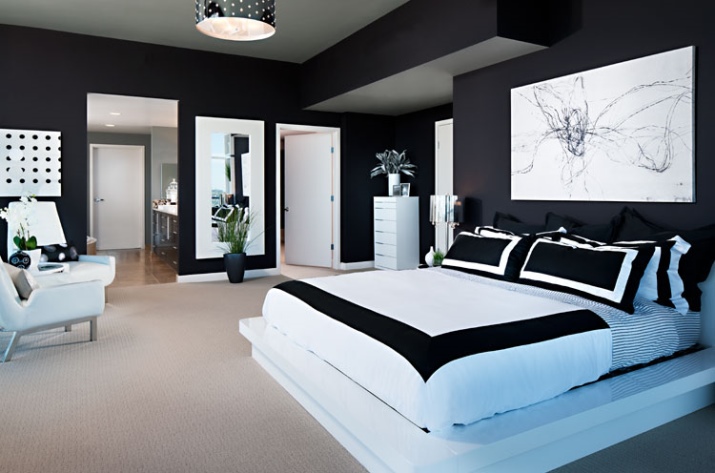
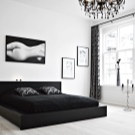
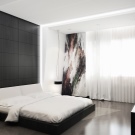
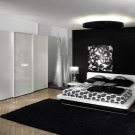
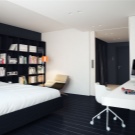

Choosing a two-tone bedroom doesn't mean you can't use other shades. The combination is paired with one vibrant color, and this can provide an opportunity to add finishing touches to your favorite shade, be it red, yellow, cobalt blue or another shade. Using gray accents can help match two contrasting colors together for a calming effect.
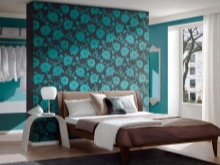
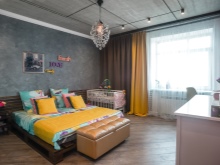

Black and its combinations can lead to the fact that the space becomes smaller, so when using shades, the size of the room must be taken into account. Many people are afraid to use black on their bedroom walls, but white, contrasting bedding and a large mirror or artwork on large white canvas above the headboard will help keep rooms from looking overwhelming.
Green has the ability to mix with all colors in the spectrum, making it an ideal choice for walls, bedspreads, carpets and even floors. Some green shades work well together. Therefore, all shades of furniture fit green walls.

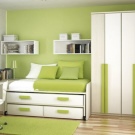
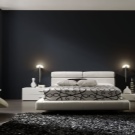
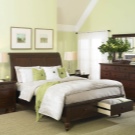
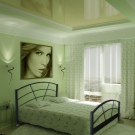
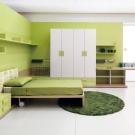
The choice of colors according to psychologists
According to psychologists, the main thing is to decide what mood the tenant wants to establish in his bedroom. Most homeowners want this space to be a place with soothing tones. But this does not mean that bright or dark shades do not belong here.You can use a palette of neutrals to create a look that leaves room for bold accents on bedding, pillows, lamps, and other accessories. A neutral palette also works well because you can change the colors of your accessories to suit your mood.
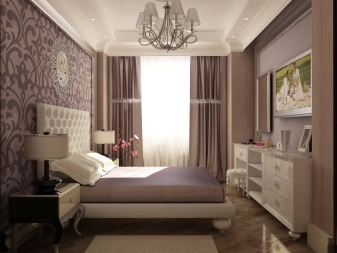
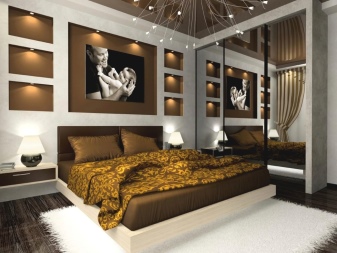
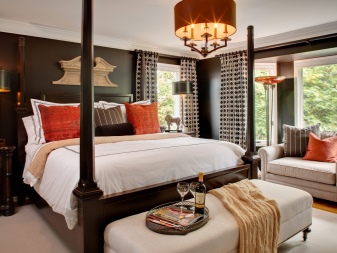
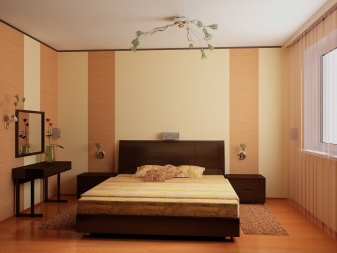
If you want more color on your bedroom walls, let passions guide homeowners. If the inhabitants love green, let them paint the walls green or azure. It is one of the best colors for bedrooms because it has elements of both warm and cool shades, there is a wide range of shades to choose from. With green, you can imagine your room in a modern, traditional or eclectic style. It looks great with complementary bright furniture colors.
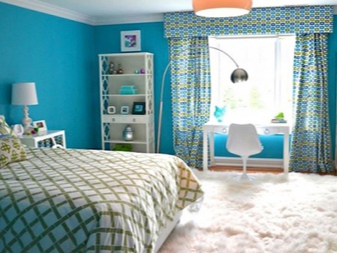
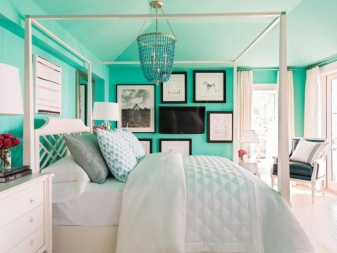
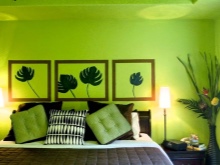
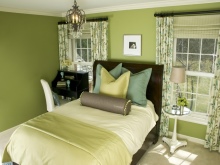
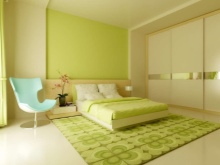
If red is your favorite color, you can use it in the bedroom, but be careful. Red is stimulating and too much of this color can be overwhelming.
In such a case, it is better to choose a muted shade, or try using red on one wall, either behind the back of the bed, or on a wall with large windows to break up the intense color. Be careful when using wood furniture in a room with red walls, as it can look pretentious.
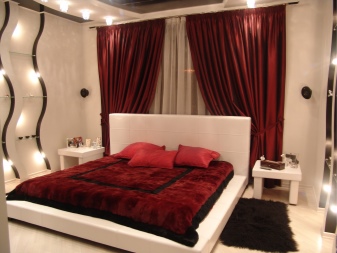
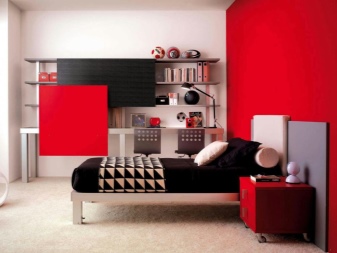
According to psychology, softer shades will be more relaxing. Psychologists even recommend black, especially for spouses. But in case it mixes with white furniture and bright touches such as yellow or turquoise. Bright colors may not be the best options for adults looking for a place to relax in the evenings, but if one of these shades is a child's favorite, psychologists advise using it. The vibrant hue will transform his bedroom into a fun space.
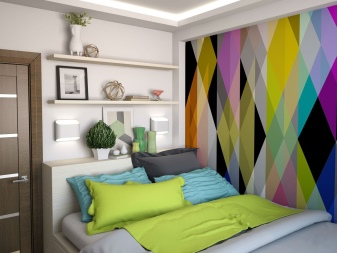
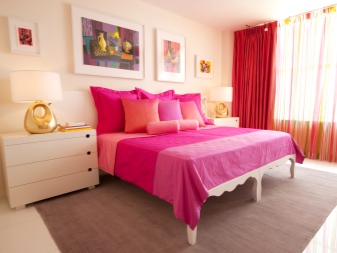


White, wenge, cappuccino are colors that can create a soothing atmosphere. Lighter shades can also help a small room feel more spacious and airy.
According to psychologists, purple stimulates the activity of the brain, so it is a good choice for those who have a work area in the bedroom.

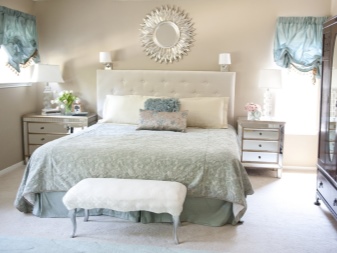
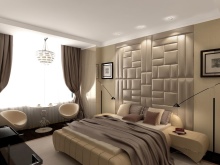
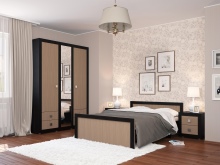

Popular tones
The three most popular bedroom colors today are:
-
purple;
-
pink;
-
green.
Purple
Lighter options for purple, such as lavender and lilac, bring the same calm feel to bedrooms as blue, but without the risk of feeling the facelessness of the room. A soothing pastel lavender is a great choice for kids 'and adults' bedrooms. You can also mix shades of varying degrees of intensity to create a layered or textured effect.
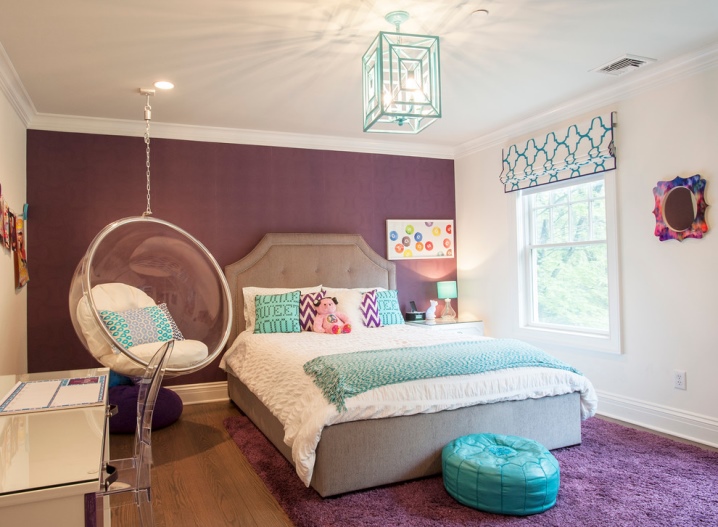
Mixing purple and red is also popular. This creates more emphasis on the bedroom walls. Buyers also opt for purple pillows, carpets, draperies, or lamps in a white bedroom to add accent. Many people paint only one wall in this color, thereby highlighting certain parts of their room.
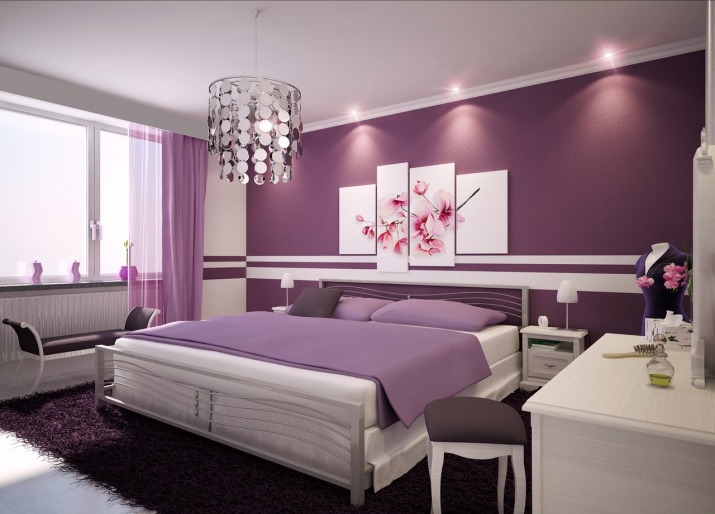
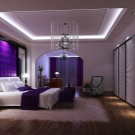
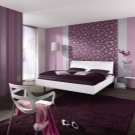
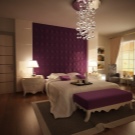

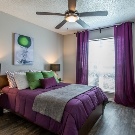
Pink
Bright shades of pink add a touch of glamor to the room.
But most don't want their room to look too feminine, so they mix their pink walls with a tufted headboard and rugs in bright green / soft brown, or go for a bed with a large wooden headboard. A rich pink with purple tones can create a seductive design in a romantic bedroom. Pink with hints of raspberry and rose can add extra romance to a room.
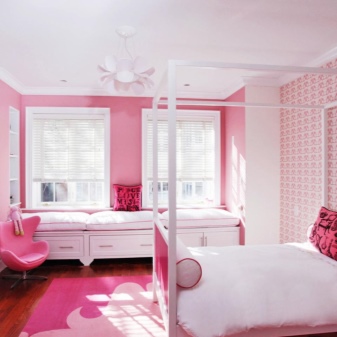
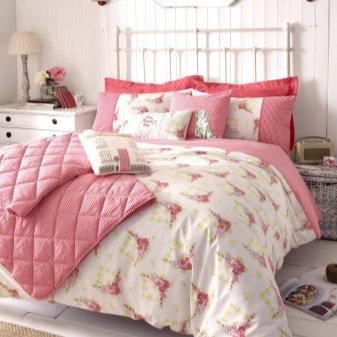
Many people mix pink with green. Bright pink looks great when paired with a white bed, dresser, and other furniture. For art deco decorations on pink walls, you can opt for black as an accent and shiny silver metal fixtures. Hot pink looks great with other colors like green, blue, turquoise or orange.

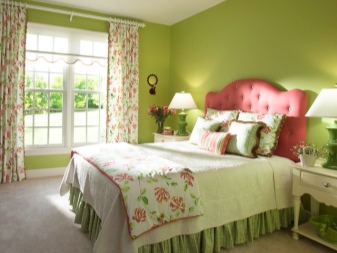

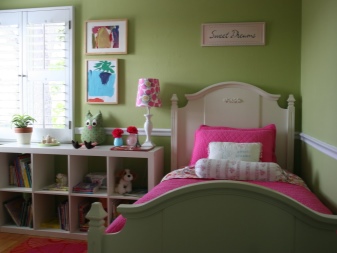
Green
Emerald green, lime green and other shades of green combine the color qualities of yellow with the soothing effect of blue. It is the color of nature, fertility, life and balance. The bedroom in olive, mint, pistachio, light green colors symbolizes self-esteem, harmony and well-being. The shades range from bright and cheerful to deep and elegant. It is believed that if the house does not know what color to paint the bedroom in, you need to start with green.
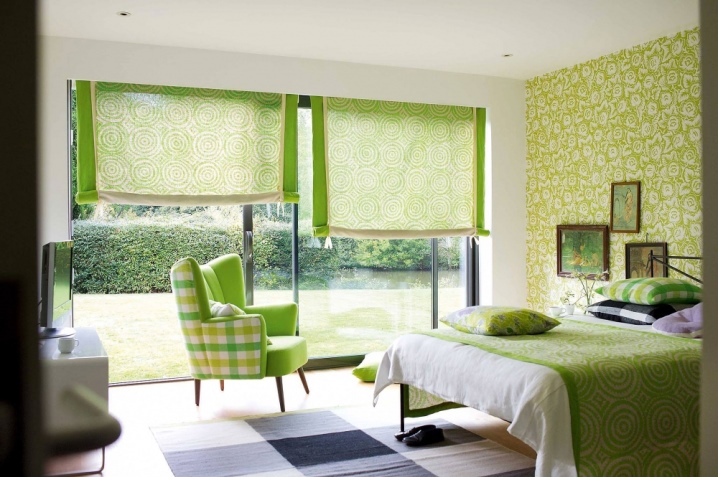
The muted green color goes well with the modern and artisan style, which includes many wooden pieces in the room. Deep greens work well with more traditional décor and can be mixed with other colors such as raspberry, burgundy, or brown for an elegant look.
Walls in apple green or lemon shades perfectly complement any setting. If the household loves ultra-bright colors, then you can choose a shade of lime green combined with purple or red.


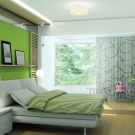
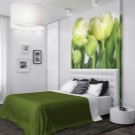

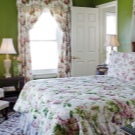
Color palette and styles
- Tropical. The general palette of this style is light and airy (colors: green, blue, white). The room is furnished with dark wood rattan or leather wicker furniture. Quirky tropical motifs such as palms, monkeys, flowers and pineapples, as well as ceiling fans, curtains, and white or light bedding set this style apart from the rest.
- Italian. A palette of earthy tones (mustard yellow, pumpkin orange, brown, olive green, red and gold) seem to add warmth to the interior. Heavy wood furniture with a laconic look. but the rich decor gives the style an elegance.
- Modern. Functional, simple, clean and classic colors are the hallmarks of the modern bedroom. The palette is generally muted, relying on neutral tones such as gray, brown, cream, and black. The modern bedroom is characterized by furniture with simple lines, as well as interesting lighting fixtures and the use of mirrors and glass as accents. Blending textures prevents the style from being cold.
- Asiatic. An Asian-style bedroom usually has dark furniture, often lacquered and richly decorated with Asian-inspired accents. The palette is based on natural colors ranging from dark brown and black to creamy white, soft yellow or brown. Although the overall style is somewhat decorative, it is not fussy at all because the number of accessories is kept to a minimum.
- Nautical. You don't have to live near the coast to love this easy style. Palette: blue, green, white and brown, sometimes with accents of red. Natural materials: seagrass and sisal mixed with old, painted wood keep the style laid back. Several coastal decorative motifs such as anchors or seashells can be used.
- Traditional. The traditional bedroom is more formal, yet comfortable and welcoming. Furniture is usually combined with decorative elements. While the color scheme relies on neutral tones, it's easy to spice up a room with bolder color on walls or bedding.
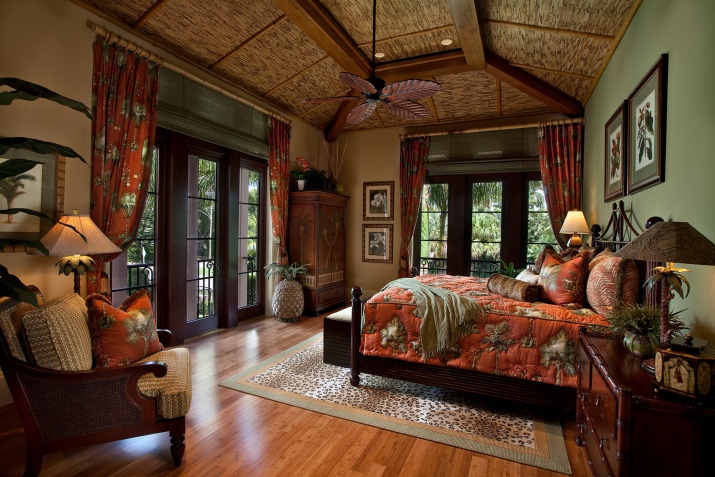
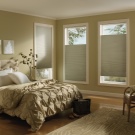
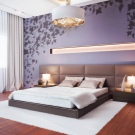
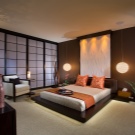
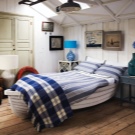
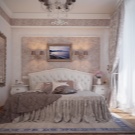
Printed solutions
- Floral motives... In a bright, cozy bedroom, floral prints evoke a calm mood, especially if the bedroom is in a cottage.
- Classic "ditzy florals"Look great, especially when multiple styles are mixed. You can keep linens, quilts and pillows in the bedroom in a floral motif and paint the walls white.
- Motives with animals - a classic decorative idea to create a comfortable atmosphere. You can decorate part of the room with such a print or focus on one thing. For example, the back of the headboard can be decorated with an animal print, while floral designs adorn pillows and lampshades.
- Cell. Perfect for a bedroom with handmade vintage furniture. Checkered walls work well with muted bedding colors and soft pillows.
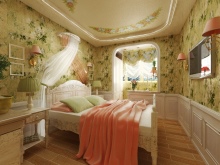

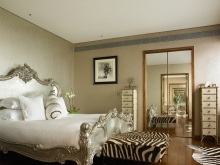
Rules for choosing a favorable color scheme
- The easiest way to choose the best bedroom colors - start with flowers that the household loves. Using your own favorite color as a base color, you can create a color scheme for the entire interior.
- Inspiration for choosing an interior color scheme... Magazines and catalogs have always been the main sources of design ideas. You need to remember your favorite color combinations and use them later in your bedroom.
- No need to learn color theoryto get great ideas from the little color wheel. These inexpensive tools can quickly generate color scheme variations. With the turn of the wheel, you can see how colors can relate to each other and learn the basics of color theory. You can choose shades of these colors from your favorite paint store.
- You need to understand that neutral colors are not so boring.... Simply because when choosing neutral paint colors, you can update your neutral color palette at any time by being creative in your use of colors. A striped wall in neutral colors adds zest to the room.
- Easily create a color chart using famous paintings... You can choose a color from the artwork in the museum. Most artists are masters of color and light, creating their own color schemes for their artwork. You can benefit from understanding them by choosing a color from your favorite piece of art.
- Don't forget to try lighter or darker shades of your favorite colors.... Sometimes it takes a little adjustment to find the right shade.
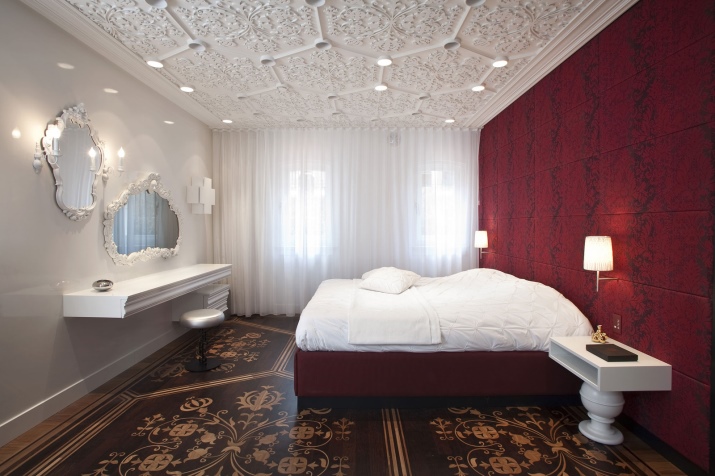
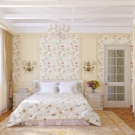

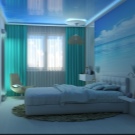

Fashionable interior design ideas
The blue and white color scheme is the source of inspiration for this room, and the unique chandelier lends the space an effortless elegance.
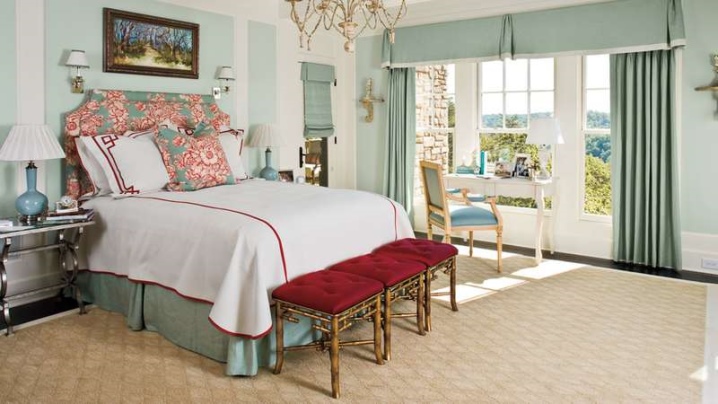
Pretty flower bedroom. Hand-painted floral wallpaper was the starting point for every other element in this bedroom: apple green carpet, hot pink velvet plush bed, and patterned bedding.
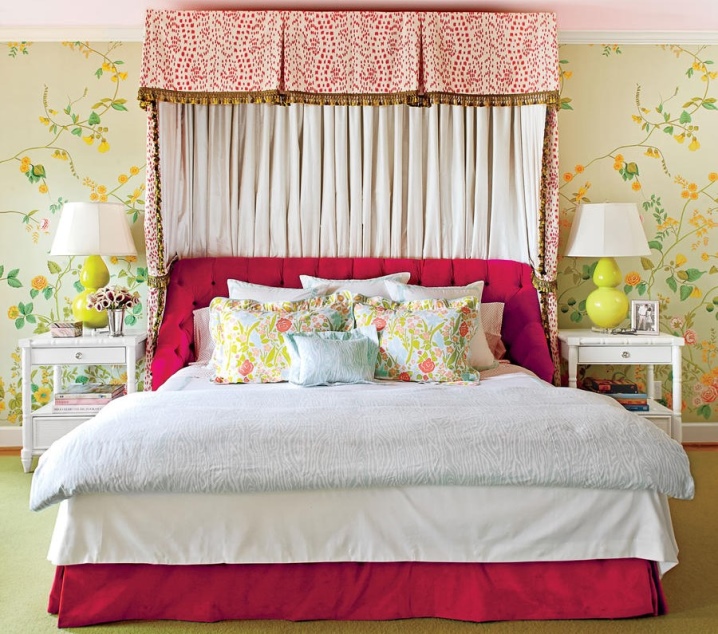
The highlight of this room is the accent stenciled wall behind the bed. The bright blanket is covered with a soft blue blanket. This mutes an overly bright room.
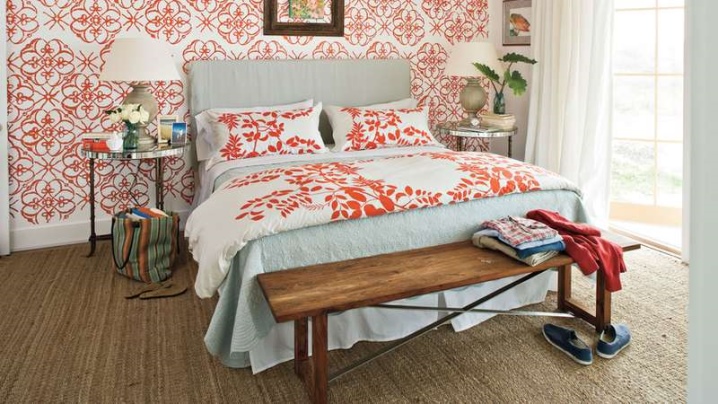
You can change the usual white walls to pale pink, thereby creating a soft and romantic atmosphere.
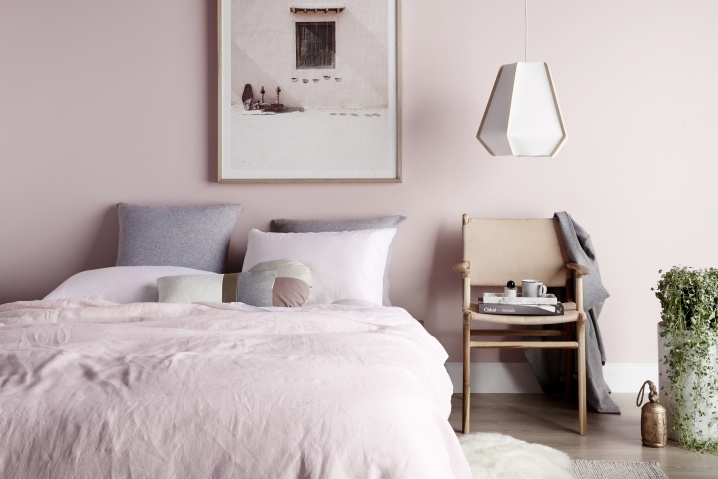













The comment was sent successfully.